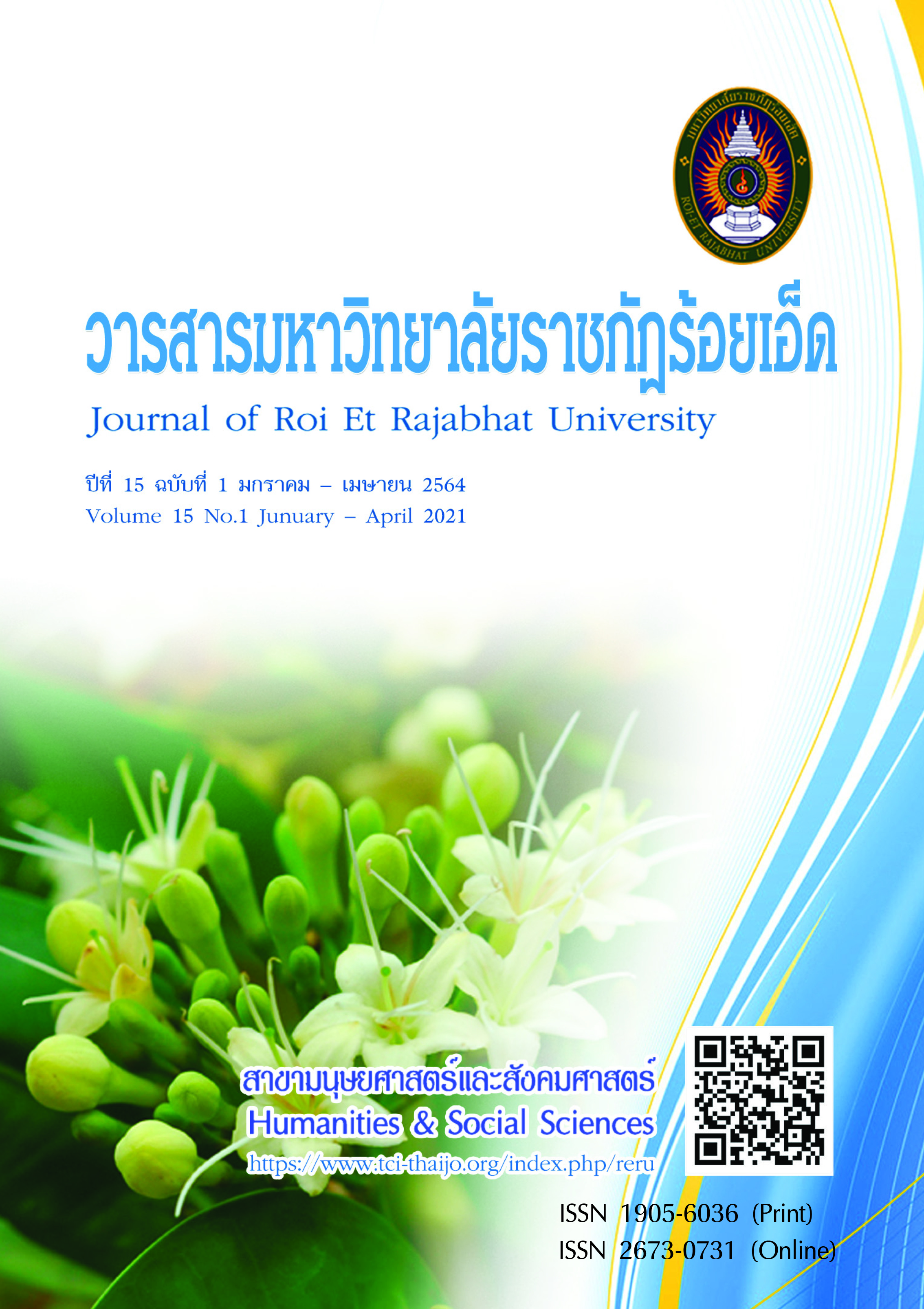Servant Leadership Model Development for Finance Officers of the Royal Thai Army Second Region
Keywords:
Model, Development, Servant leadershipAbstract
The purposes of this research were to 1) investigate components of servant leadership, 2) construct and develop a model for developing servant leadership and 3) assess the effectiveness of a developed model for developing servant leadership of the finance officers of the royal thai army second region. The samples were 105 of the commissioned officers and 105 of noncommissioned officers total of 210 officers. The instruments for collecting data were an expert interview form, a servant leadership questionnaire, an evaluation and servant leadership development model form, a servant leadership assessment form and a customer satisfaction assessment form. Data were analyzed using percentage, mean and standard deviation. The findings were as follow : 1) The components of servant leadership of the finance officers involved six majors as follows: (1) the role-based service, (2) determination of development and empowerment of personnel, (3) participation and community building, (4) having good vision and communication, (5) listening and empathy and (6) humility and good human relations. As a whole, leadership operational conditions was a moderate level. 2) The model for developing servant leadership of the finance comprised (1) principles, (2) objectives, (3) procedures, (4) the development for each component and (5) follow-up and evaluation. 3) The results from assessment the effectiveness of the servant leadership development model for the finance officers found that (1) the model had an appropriateness as a whole at a high level, (2) servant leadership had changed significantly higher after the experiment with statistical significance at the level of .01, (3) overall satisfaction of service users towards the servant leadership behavior of the experimental group was at a high level and (4) the 2 weeks follow - up servant leadership was significantly higher than after the experiment leadership development model at the level of .01.
References
จิรวรรณ เล่งพานิชย์. (2554). โมเดลสมการโครงสร้างภาวะผู้นำแบบใฝ่บริการของผู้บริหารสถานศึกษาขั้นพื้นฐาน. ดุษฎีนิพนธ์ ปรัชญาดุษฎีบัณฑิต สาขาวิชาบริหารการศึกษา. ขอนแก่น: มหาวิทยาลัยขอนแก่น.
ชรินดา พิมพบุตร. (2556). รูปแบบการพัฒนาภาวะผู้นำให้บริการของเจ้าหน้าที่ฝ่ายบริหารสหกรณ์ออมทรัพย์ครู ในภาคตะวันออกเฉียงเหนือ. ดุษฎีนิพนธ์ ครุศาสตรดุษฎีบัณฑิต สาขาวิชาบริหารการศึกษา. สกลนคร: มหาวิทยาลัยราชภัฏสกลนคร.
ชูชาติ สุกใส. (2559). สารจากเจ้ากรมการเงินทหารบก ประจำปีงบประมาณ 2559. สืบค้นเมื่อ 6 มิถุนายน 2559, จาก http://findept.rta.mi.th/indexfin
แซมมิล อาร์เม็ด, ฐิตินัฏฐ์ อัคคเดชอนันต์ และรัตนาวดี ชอนตะวัน. (2558). ภาวะผู้นำใฝ่บริการของหัวหน้าหอผู้ป่วย และความพึงพอใจในงานของพยาบาลประจำการในโรงพยาบาลวิทยาลัยการแพทย์. พยาบาลสาร. 42,(พิเศษ), 136-148.
ปองภพ ภูจอมจิตร, ปรีชา คัมภีรปกรณ์ และนุกูล กุดแถลง. (2555). การพัฒนาตัวบ่งชี้ภาวะผู้นำแบบใฝ่บริการของผู้บริหารสถานศึกษาขั้นพื้นฐาน. สืบค้นเมื่อ 6 มกราคม 2563, จาก http://ejournals.swu.ac.th/index.php/EAJ/article/view/5404
ละม้าย กิตติพร. (2555). รูปแบบการพัฒนาภาวะผู้นำการให้บริการของบุคลากรในสำนักงานส่งเสริมสวัสดิการและสวัสดิภาพครูและบุคลากรทางการศึกษา. ดุษฎีนิพนธ์ ครุศาสตรดุษฎีบัณฑิต สาขาวิชาบริหารการศึกษา. สกลนคร: มหาวิทยาลัยราชภัฏสกลนคร.
วาระดี ชาญวิรัตน์. (2559). การพัฒนาภาวะผู้นำใฝ่บริการ ของผู้นำวิชาการด้านการศึกษาพิเศษ. วารสารชุมชนวิจัย. 10,(1), 35-44.
สายันต์ บุญใบ, วัฒนา สุวรรณไตรย์ และวันนพร สิทธิสาร. (2560). การพัฒนาภาวะผู้นำใฝ่บริการของนักศึกษาสาขาวิชาดนตรี มหาวิทยาลัยราชภัฏสกลนคร. วารสารการบริหารการศึกษาและภาวะผู้นำมหาวิทยาลัยราชภัฏสกลนคร. 5,(20), 27-35.
สัมฤทธิ์ กางเพ็ง และสรายุทธ กันหลง. (2553). ภาวะผู้นำใฝ่บริการในองค์การ แนวคิดหลักการ ทฤษฎี และงานวิจัย (พิมพ์ครั้งที่ 2). ขอนแก่น: หจก.โรงพิมพ์คลังนานาวิทยา.
Downloads
Published
How to Cite
Issue
Section
License
บทความที่ได้รับการตีพิมพ์เป็นลิขสิทธิ์ของวารสารมหาวิทยาลัยราชภัฎร้อยเอ็ด
ข้อความที่ปรากฏในบทความแต่ละเรื่องในวารสารวิชาการเล่มนี้เป็นความคิดเห็นส่วนตัวของผู้เขียนแต่ละท่านไม่เกี่ยวข้องกับมหาวิทยาลัยราชภัฎร้อยเอ็ด และคณาจารย์ท่านอื่นๆในมหาวิทยาลัยฯ แต่อย่างใด ความรับผิดชอบองค์ประกอบทั้งหมดของบทความแต่ละเรื่องเป็นของผู้เขียนแต่ละท่าน หากมีความผิดพลาดใดๆ ผู้เขียนแต่ละท่านจะรับผิดชอบบทความของตนเองแต่ผู้เดียว





